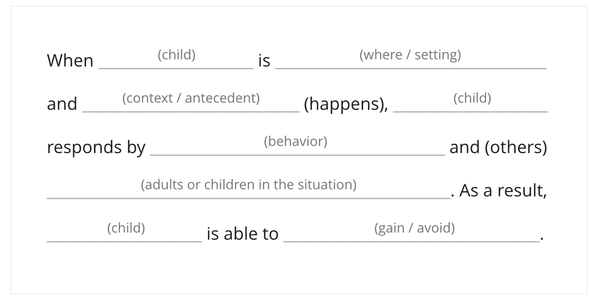Request Support
Why should we have to teach kids to be good?
In the past, discipline has focused mainly on reacting to specific student misbehavior by implementing punishment-based strategies including reprimands, loss of privileges, office referrals, suspensions, and expulsions.
Research shows that punishment is ineffective, especially when inconsistent and absent of other positive strategies. Introducing, modeling, and reinforcing positive social behavior is better than reactive punitive strategies. Teaching behavioral expectations and rewarding students for following them is a more effective than waiting for misbehavior to occur before responding. The purpose of PBIS is to establish a climate in which appropriate behavior is the norm.
(adapted from pbis.org)
Research shows that punishment is ineffective, especially when inconsistent and absent of other positive strategies. Introducing, modeling, and reinforcing positive social behavior is better than reactive punitive strategies. Teaching behavioral expectations and rewarding students for following them is a more effective than waiting for misbehavior to occur before responding. The purpose of PBIS is to establish a climate in which appropriate behavior is the norm.
(adapted from pbis.org)
Supporting & Responding to Behavior
The chart below provides an introductory framework for behavior management in the classroom.
Foundation of classroom supports begin with an effective physical layout, predictable routines, and clearly defined expectations that the teacher explicitly models.
Practices may be both preventative and responsive to behaviors. Prevent problematic behaviors through supervision, providing opportunities for all students to respond, acknowledging the students meeting expectations, and frequent reminders of expectations. Respond to behaviors using brief, specific statements, removing the inadvertent reward of the problem behavior, or creating learning opportunities that emphasize desired behaviors.
Data Systems may include counting how often behaviors occur, recording duration of behaviors, or recording information about the events that occur before, during, and after behavior incidences.
View the full guide to evidence-based classroom strategies for teachers.
Foundation of classroom supports begin with an effective physical layout, predictable routines, and clearly defined expectations that the teacher explicitly models.
Practices may be both preventative and responsive to behaviors. Prevent problematic behaviors through supervision, providing opportunities for all students to respond, acknowledging the students meeting expectations, and frequent reminders of expectations. Respond to behaviors using brief, specific statements, removing the inadvertent reward of the problem behavior, or creating learning opportunities that emphasize desired behaviors.
Data Systems may include counting how often behaviors occur, recording duration of behaviors, or recording information about the events that occur before, during, and after behavior incidences.
View the full guide to evidence-based classroom strategies for teachers.
What is Behavior?
All behaviors have a function or purpose. Students and behaviors are not “bad.” Instead, students engage in behaviors that are inappropriate or problematic for a given context.
Students engage in behaviors that “work” for them, or result in desired outcomes or reinforcement. Should a behavior continue to be problematic, consider the function of the behavior.
Students engage in behaviors that “work” for them, or result in desired outcomes or reinforcement. Should a behavior continue to be problematic, consider the function of the behavior.
After determining the purpose of the behavior, we can then provide positive interventions that would reduce the undesirable behavior, or identify appropriate behaviors to substitute the inappropriate ones.
Click to access blank PDF, courtesy Make Access Happen
Educators must act professionally. Use planned and established school and classroom procedures in manners that are calm, neutral, business like, and contingent. Academic and social behaviors are taught, changed, and strengthened by similar instructional strategies (i.e., model, prompt, monitor, and reinforce).
Consider Families
We must strive to replace punitive practices with ones that seek to understand and improve a child’s situation. We enact policies and practices that take into account students’ home-life challenges.
Families want…
Families want…
- To feel welcome at school.
- To receive more information on how to help their children succeed.
- Positive feedback and personalized contact about their children whenever possible.
- To be partners in the process of educating children, with timely notification of problems.
Tell Your Story
We want to highlight the great things happening at Satilla Marsh. Let us know how you, another teacher, or a student is promoting positivity. We want to feature your story on the blog.
Satilla Marsh Procedures
Flowchart, Dojo, matrixes, etc, coming soon





